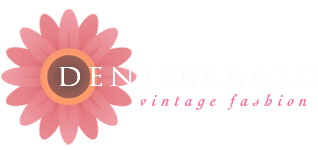
Vintage corduroy: The beloved 1968 children's book about a teddy bear in corduroy overalls
Parlez-vous français?
If so, you probably believe that the word corduroy means something like “cord of the king,” with some sort of royal lineage. When preparing the VFG Fabric Resource saw that there is not a consensus on this in references.
Corduroy
There is argument about the derivation of the name corduroy, with many claiming it got its name from the French corde du roi, or King’s cord, and that it was used for the clothing of servants in French royal households in the 17th and 18th centuries. It may have been a form of marketing (wear a fabric worn in the presence of French nobility!) by an English entrepreneur. Whatever the origin of its name, corduroy is a rugged and sturdy fabric, most often made of cotton, although today cotton blends are common. More rarely, and expensively, it is made of silk.
The wales (ridges) of corduroy are formed by having extra filling yarns woven into a background. The filling yarns float over several or more warp yarns, then under one or two. The yarns floating over the surface are then cut, leaving tufts of yarn that are brushed up into soft vertical ridges. The wales are rounded as the float threads are longer at the centers of the ridges. Corduroy’s ground is plain or twill weave, and these are called tabby back and Genoa back, respectively.
There are many weights of corduroy, defined by the number of wales per inch. The lighter, finer corduroys have tiny wales and as many as 25 wales per inch in the case of featherwale, while widewale (also called jumbo and elephant cord) can have as few as two wales to the inch. Corduroy can be made with alternating wider and narrower wales—called thick and thin corduroy.
Uncut corduroy is a fabric that has a corded appearance, but without the velvety ridges of the cut floats. Very sturdy, it is used for sportswear.
Uses: Depending on the weight, everything from dresses and shirts to upholstery, with suits, coats, slacks, children’s clothing, workwear and accessories in between.
See also: Featherwale corduroy, Midwale corduroy, Pinwale corduroy, Widewale corduroy

©Vintage Fashion Guild - Text by Margaret Wilds/denisebrain, photo by Hoyt Carter
I would be thrilled to see and touch a silk corduroy someday! For now, I have a couple fine cotton corduroy items in my Etsy shop:

50s pinwale cotton corduroy coat

A flaring skirt dress, also from the 1950s, in pinwale corduroy
